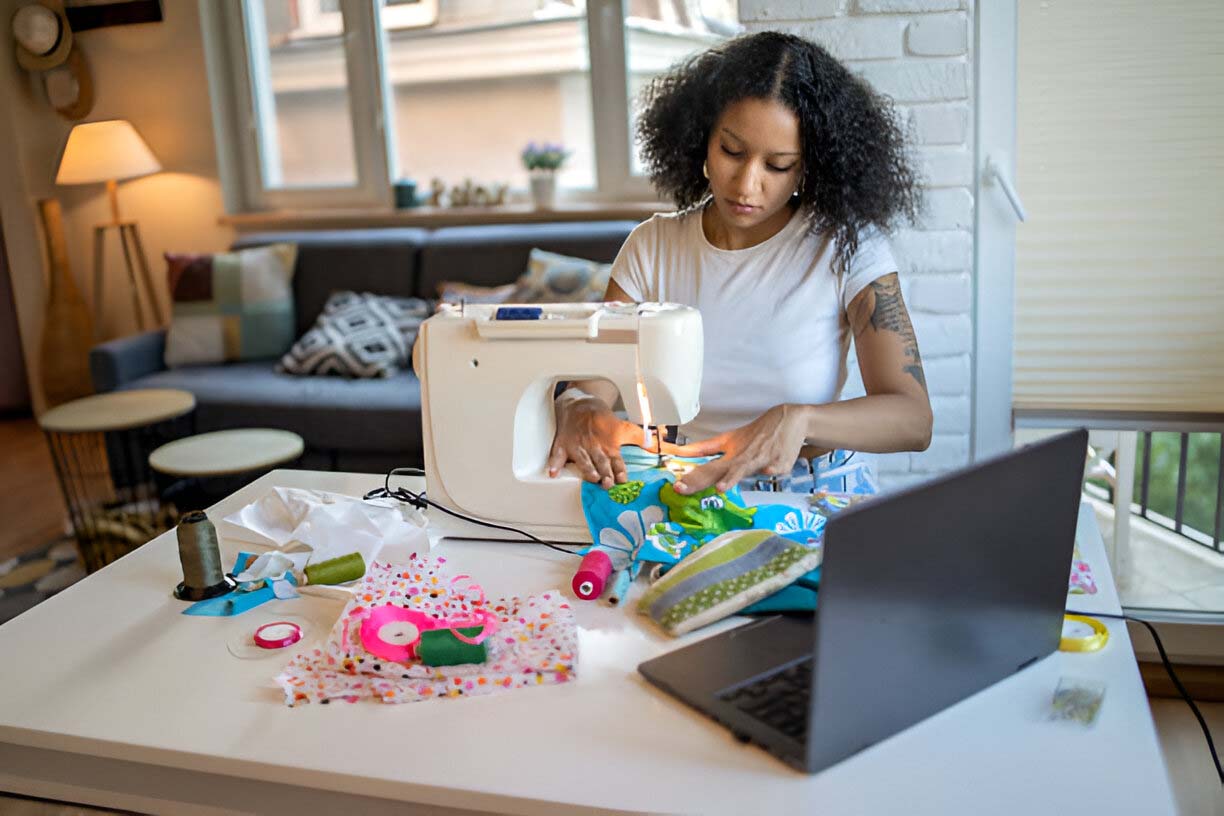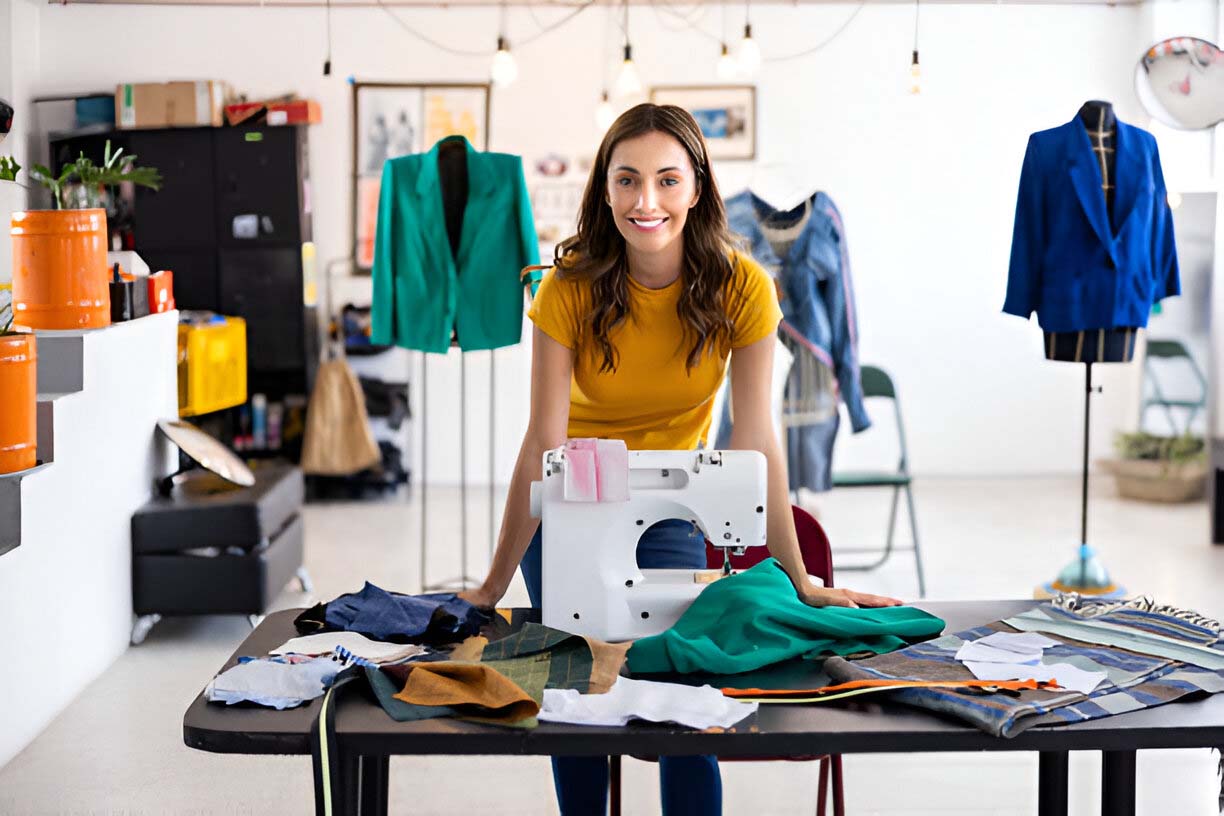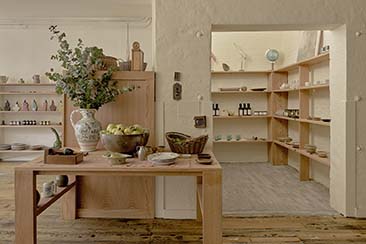Whether you want to start sewing for the first time or you want to upgrade your current sewing machine, you might be wondering what’s on the market. Wouldn’t it be great if sewing machines were a one-type-fits-all kind of thing?
However, the reality is that your dream sewing machine is probably different from someone else’s. Before you start feeling overwhelmed by all of the options, don’t worry. With a little research and a few helpful tips, you can find the perfect sewing machine.

Is This Your First Sewing Machine?
First-time sewing machine buyers may want to ask themselves a couple of questions. Actually, these questions can also help longtime sewers pick the perfect replacement machine. If you just want to hem pants and curtains, an entry-level machine will be great. If sewing is your new favorite hobby, it will probably be worth it to invest in a machine with more capabilities.
Do you think you will be sewing garments, home decor, or quilts? All of these projects use different fabrics and different techniques. Don’t worry, you don’t need to know all the details yet, but having a general idea of the types of projects you want to sew can help you identify which features are a must-have in a machine.
Considerations If You’re Upgrading Your Current Sewing Machine
If you’re into quilting, you may want some extra features, such as a dual feed, quarter-inch foot, and walking foot. If you sew a lot of garments, you may want certain specialty stitches, buttonholes, and a freehand system to raise and lower your presser foot.
What about future projects? Are you planning on doing more than one type of sewing? Maybe you’re planning on getting into embroidery or sticking with one type of sewing.
If you sew constantly, it will probably be worth it to invest in a machine with more capabilities. If it’s a once-in-a-while activity, a barebones machine could be just fine. Don’t forget about features.
Are there features you’d love to have but are missing on your current model? What about its size? Would you like something more compact on your sewing table? Or do you need more room for large projects? Do you have a dedicated sewing area so you won’t have to transport your machine from room to room?
Once you answer these questions, and any others that pop to mind, you should find it easier to find the ideal replacement sewing machine.

Key Tips for Choosing a Sewing Machine
You can always pick the first model you see. You may even get lucky and love your new sewing machine. However, there’s a better way to shop. These essential tips can help ensure you bring home your dream sewing machine.
Don’t Overpay
Pay for what you really need in a machine. This isn’t only advice for seasoned makers. If you are new to sewing, small obstacles can derail you, so don’t start with a machine that doesn’t sew well just because it’s cheaper. You don’t want your machine to discourage your new hobby.
That being said, don’t spend money on features that you won’t use. This can also apply to machines that come with a ton of stitches.
Unless you plan to use a bunch of decorative machine stitches, you only need a few stitches for garment construction. The vast majority of home sewists will get by just fine with a straight stitch, a zigzag, and a buttonhole function.
Take the Machine for a Test Sew
Consider your machine like you would a new car. Don’t you want to test drive it? You never know, you might want that free-hand system once you try it. Bring some fabric or an old pillowcase, try out a few stitches, see how the thread cutter works, and make sure that you love the purr of your machine because you’ll be hearing it a lot.
Bring some swatches of the fabrics you sew the most for your test drive. Someone who wants to sew athletic wear will use different fabric than someone who wants to sew quilts. To ensure that your potential machine can handle your favorite fabric, see how it does with your sample swatches.
Ask the seller if the machine can handle specialty projects, like denim or bulky layers, stretchy knits, and delicate fabrics. If you plan to sew a lot of buttons, be sure to practice a few buttonholes during your test sew. That one-step buttonhole feature might really be worth the added cost.
Don’t Go Too Big
This is the same rule with any of your sewing tools. If your machine and tools don’t help you finish your project with ease and joy, you will use them as an excuse not to sew. You want to go with a sewing machine you can grow into. You don’t want a machine that’s too large or intimidating to use.
Read the Right Sewing Machine Reviews
If you’re reading a quilting forum for advice about sewing swimwear, you’re not getting the right reviews. Don’t feel pressured to commit. Take your time and sew on as many machines as necessary until you find the one!
Don’t forget about getting recommendations from other sewers. Friends and family can be great sources of information. They can usually give you details about a sewing machine’s performance that you may not find in reviews.
Who knows, your friends and family may even let you take their sewing machine for a spin. You can do a test run to see if it’s the perfect sewing machine for your projects.
Buying From a Dealership May Be Best
Have you ever peeked inside a sewing machine? There’s a lot going on, and if you’re new, you might need some troubleshooting help. Your local sewing shop will provide regular machine maintenance, repairs, and general support.
However, this doesn’t mean you can’t pick up a great secondhand sewing machine. Just make sure you’re purchasing it from a reputable person. Ideally, a friend or family member.
Take Your Sewing to the Next Level
If you’re ready to take your stitches to the next level, then you need a sewing machine to help take you there. Just remember to take your time and think about what you need from the machine before handing over your credit card.








